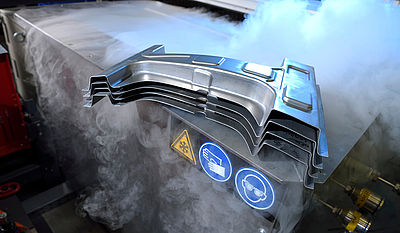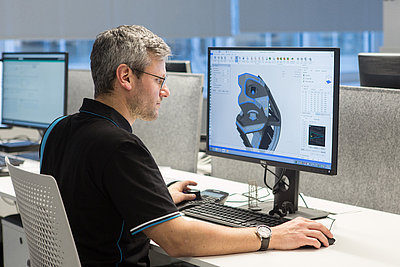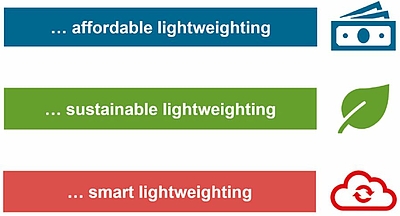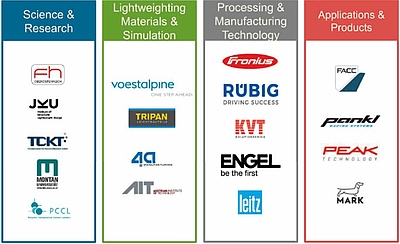Sustainable, affordable and smart
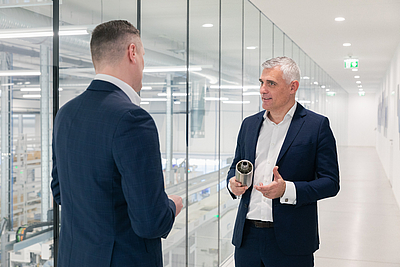
15.03.2022
Lightweight construction is not an end in itself. It plays a major part in meeting sustainability targets – not just in the field of mobility, but in many other sectors. The A2LT policy paper entitled ‘Roadmap for sustainable, affordable and smart lightweight construction as an area of Austrian strength’ defines precisely how Austria can build on its excellence in lightweight construction.
By cutting down on weight, material and energy, lightweight construction supports the economical and environmental optimisation of products, processes and systems. Sustainability, affordability and intelligence are the main factors in overall optimisation: from this viewpoint, lightweight construction is both the key technology and the one issue that cuts across. In terms of the product lifecycles, lightweight construction significantly reduces carbon emissions, thereby supporting the attainment of national and international climate, environmental, resource conservation and sustainability targets.
Excellence in lightweight construction
Austria is a centre of excellence for research and industry in the field of lightweight construction. To ensure viability and competitiveness, however, this position needs to be consolidated and expanded over time. Rising demand in the mobility, aerospace, energy and construction industries spells enormous potential for value creation and job creation. On this point, the leading representatives of Austria’s lightweight construction community in industrial and research circles – who pool their activities within the A2LT (Austrian Advanced Lightweight Technology) platform – are agreed.
Roadmap to technological pre-eminence
In their roadmap to sustainable, affordable and smart lightweight construction as a field of Austrian strength, they define six major topics whereby measures can support a leading role for Austria as a centre for lightweight technology. Over the long term, this approach will serve to establish a strong market position while safeguarding high value industrial jobs. The A2LT platform will discuss, share and expand on the six platform topics with relevant stakeholders at national and international level.
Boosting innovation through research
A high degree of innovation and a forward-looking attitude (especially on the part of the public sector and responsible ministries) are called for if industry is to remain competitive and sustainable. The technological transformation and the ever-developing transfer of knowledge and information are proceeding unabated, which is why links to cutting-edge international research and technology must be established and accelerated by all available means.
For a resilient Europe
To ensure the resilience of Europe as a production hub, we must strive to achieve technological pre-eminence in the field of innovative lightweight construction. This will only be achieved by being open to technology from a full lifecycle perspective. In two of the four dimensions defined by the EU Commission – namely the green and the geopolitical dimensions – lightweight construction can deliver a critical contribution. The aspiration of European technological leadership must be strengthened – ideally where a leading role already exists. “We stand for a commitment to long-term R&D efforts with a view to maximising the effectiveness of lightweight construction to cope with the challenges of the future,” says platform spokesperson Stefan Seidel.
Accelerating the technology transfer
“Think of it like manoeuvrable speedboats versus cumbersome tankers: alongside big flagship initiatives as funding instruments at national and international level, we have to develop efficient and non-bureaucratic instruments that speed up industrial applications of technology,” believes Plastics Cluster Manager Wolfgang Bohmayr. To this end, it is necessary to simplify funding conditions and accelerate processes, and also to classify topics at higher technology readiness levels as eligible for funding. In this way, results of research can translate into successful products and shorter times-to-market, thereby enhancing value creation.
Incentives across technologies and industries
As part of a national strategy of research, technology and innovation, lightweight construction will be explicitly defined as a priority. Under the terms of a lightweight construction-themed programme, issues worthy of funding can be defined with greater precision while research and industrial partners can receive more effective support in finding solutions. Isolating this topic from mobility, production and energy research programmes can also enhance the importance of lightweight construction to Austria as a technology hub.
Suitable funding instruments
Alongside improved product performance, the demands on lightweight solutions are multiplying rapidly – and may be summed up as sustainability, cost effectiveness and intelligence. In multi-material lightweight construction in particular – a field of strength in Austria – demands on relevant production technologies and flexible production concepts are poised to increase in the medium to long term. This paradigm shift must be reflected in the strategy of research, technology and innovation and the funding instruments derived on that basis.
Fostering a culture of cooperation
Given the right objectives, lightweight construction can deliver a major contribution to the attainment of both national and international climate goals. This implies massive innovative and market potential, which Austrian companies are driving right across the value chain. “Mobility is definitely the driver of lightweight construction technology, but in the light of the big global challenges we face, the number of relevant sectors is increasing exponentially,” explains Florian Danmayr, who heads the Automotive cluster. Specific flagship projects in support of sustainable, affordable and smart lightweight construction are therefore required. A highly developed culture of cooperation is essential as the basis for multi-material and cross-sector projects – and neutral platforms can support the facilitation, initiation and development of such cooperation.
Building on internationalisation
Last but not least, the European Green Deal aims to secure Europe’s global position through environmentally sound technological progress. Networking, visibility and exchanges across national boundaries are required to harness these developments while contributing existing excellence. This can be achieved through networking and public relations (understood as technology marketing in response to the latest results of research and projects). The process of incorporating lightweight construction into industrial applications is thereby accelerated. Exchanges of best practice by means of technology and knowledge transfers between the spheres of administration/politics and start-ups/SMEs/science – allied with fresh perspectives – will consolidate the effect.
Designed for recycling
Implementation of the EU’s climate and environmental goals calls for a fresh industrial policy based on the circular economy, whereby lightweight technologies play a critical role. In those industries with high circular potential in particular, holistic approaches can help to adopt the circular principle, with research and innovation providing support. In many of these sectors and areas, full potential has not yet been reached – and leading representatives of Austria’s lightweight construction industry and research institutions can play a big part in the solution. In facing up to the challenges, they can position themselves in the global forefront in future.
A2LT positions
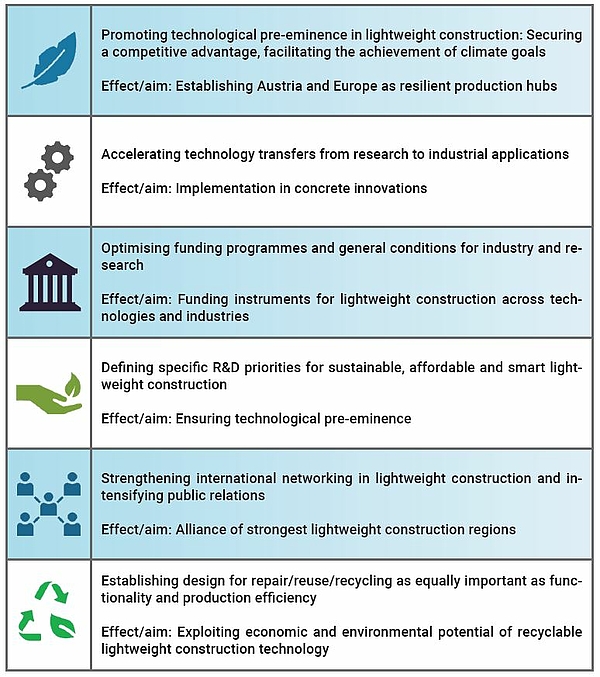
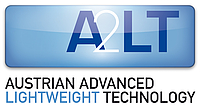
The main players in the A2LT (Austrian Advanced Lightweight Technology) platform are the automotive, plastics and mechatronic clusters, the industry division of the Economic Chamber for Upper Austria and the ACstyria mobility cluster. www.a2lt.at
